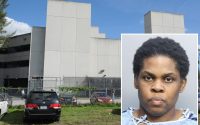San Francisco’s Millennium Tower’s tilt deepens as engineers rush to reverse lean
It’s the leaning tower of San Francisco.
The Bay Area’s Millennium Tower has only continued to tilt further and sink deeper west in spite of architects’ best efforts to steady the ritzy building.
The multimillion-dollar-per-unit tower is now leaning more than 29 inches at the corner of Fremont and Mission streets — a slant over half an inch deeper than previously revealed, according to monitoring data reviewed by NBC Bay Area’s Investigative Unit.
The half-inch tilt was reportedly gained while engineers dug beneath the sinking condominium earlier this year to support the weight of the tower — which was built atop a former landfill — along its two sides.
Fix engineers saw progress in stabilizing the Millenium Tower’s north side along Mission Street after implementing six concrete-filled steel piles along its base in January, but it may have come at a cost to the tower’s west side, the data shows.
Rooftop-based monitoring data — which is based on rooftop measurements and foundation-based determinations — indicates the tower shifted nearly an inch to the west compared to its tilt before it was supported on the north side.


Engineers in charge claim the data may not be reliable, despite pointing it to as proof of success earlier in the first phase of the project.
Project engineer Ron Hamburger told NBC in a statement that the rooftop figures are prone to weather fluctuations and said purely foundation-based data is more reliable.
The foundation-based digits also show that the tower is tilting more toward the west than ever, but only by about a quarter of an inch — a lean Hamburger claimed was “negligible.”
“We are fully confident that following transfer of the remaining design load to the piles,’’ Hamburger said, adding that “there will be no further … movement of the roof to the west.”
Hamburger and his team next plan to secure the foundation to the dozen piles sunk along Fremont Street that will bear the partial weight of the building load.

Each pile is 24 inches in diameter and has been driven 270 feet to bedrock and is designed to support 1 million pounds of weight, according to the San Francisco Chronicle.
Engineers hope to reverse the tilt — which was revealed to residents in 2016 — by the end of the month.


